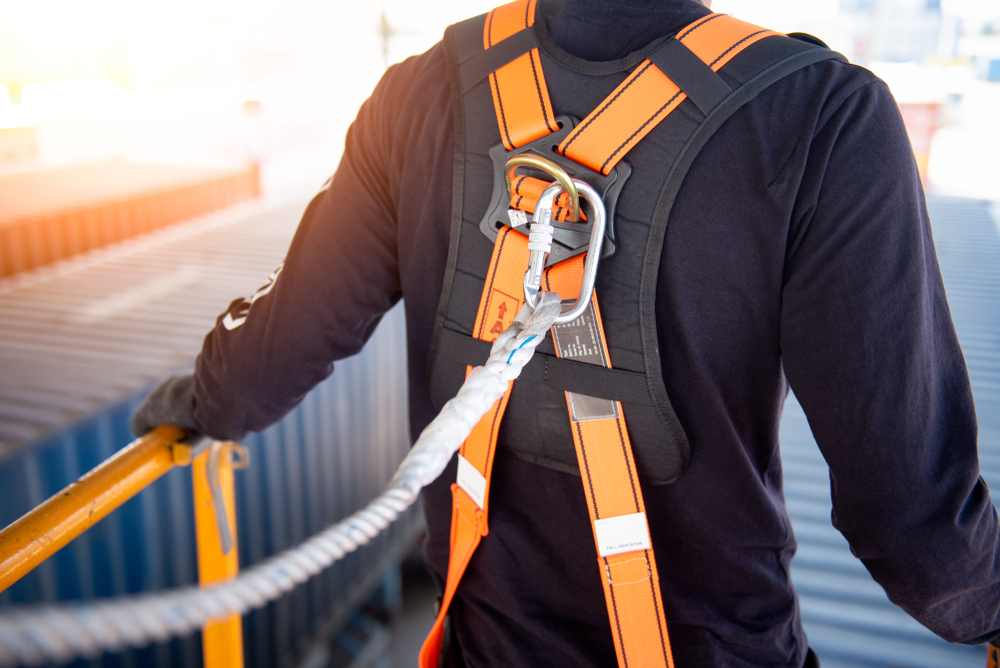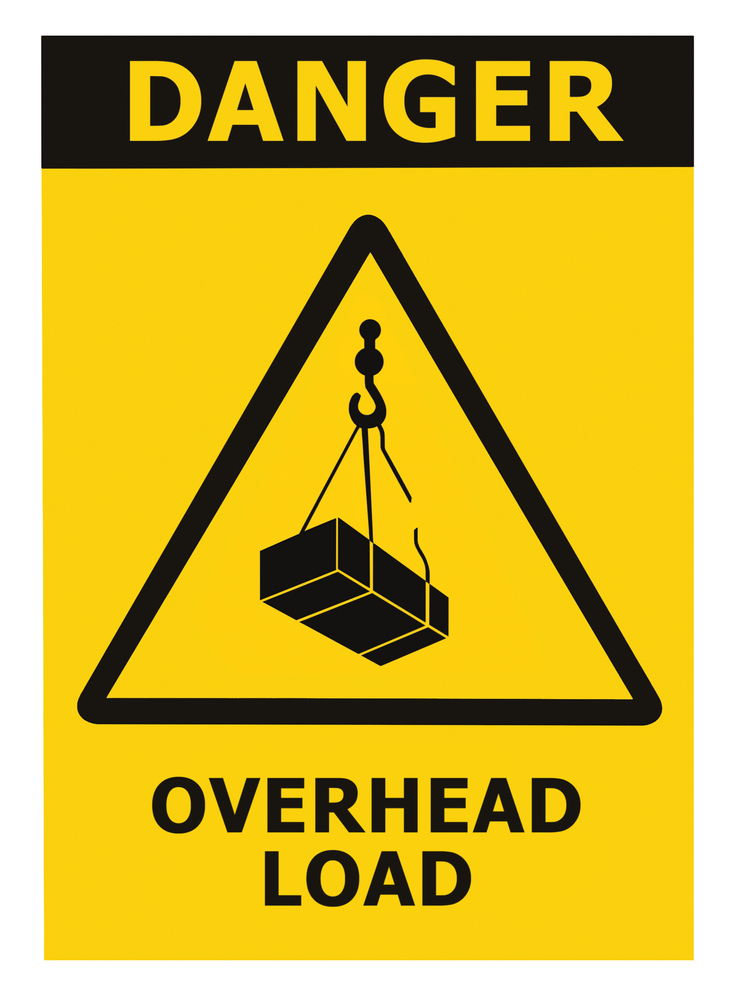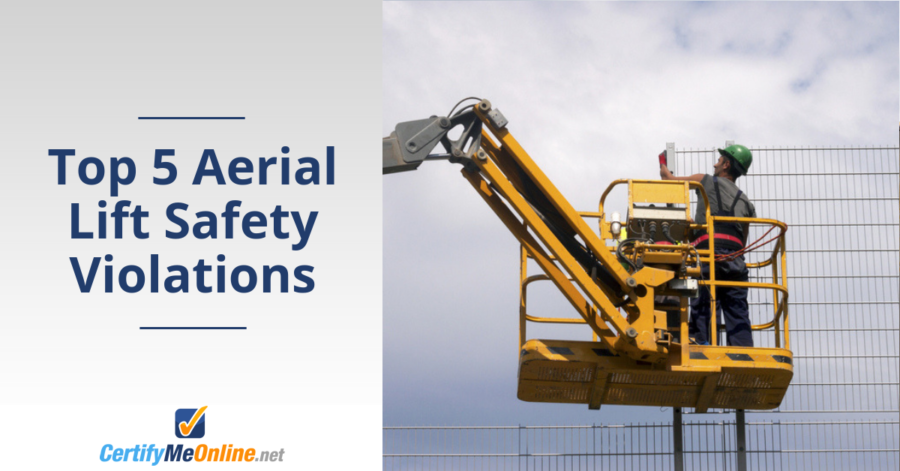Common OSHA Safety Violations for Aerial Lifts
OSHA safety violations for aerial lifts can put your business in jeopardy. To understand the impact of OSHA safety violations, let’s answer some of the biggest questions surrounding them.
What Are OSHA Safety Violations for Aerial Lifts?
U.S. businesses that employ aerial lift operators are required to comply with OSHA mandates. This is due to the fact that many aerial lift hazards can compromise workplace safety, including:
- Rain, snow, and other inclement weather
- Power lines
- Unstable ground
OSHA issues fines and penalties to companies that do not comply with its aerial lift safety requirements. Compliance violations can impact a company’s bottom line. And, they can cause brand reputation damage.
Fortunately, OSHA safety violations can be avoided. In fact, companies that provide their workers with aerial lift safety certification training can ensure their employees are well-equipped to guard against common hazards. Plus, these businesses can minimize their risk of aerial lift accidents, along with associated compliance violations.
How Common Are Aerial Lift Accidents?
Aerial lifts have replaced ladders and scaffolding on many worksites. They have also helped to improve the safety and efficiency of many types of projects. However, OSHA investigates an average of 26 aerial lift-related deaths each year due to not complying with safety standards.
OSHA aerial lift safety is critical for a well-run, accident-free workplace. CertifyMeOnline.net (CMO), the premier of aerial lift safety requirements and OSHA-compliant aerial work platform (AWP) training, put together this list to recognize some of the most common OSHA safety violations for AWPs.
Here are the top five safety violations and aerial lift hazards.
1. Lack of Fall Protection
Falls are a leading cause of death in the construction industry, and fall protection ranks high on OSHA’s most frequent violations. Workers can prevent falls by making sure:


– Standing firmly on the bucket or platform
– Not leaning over the guardrails
– Not using planks or ladders while inside the bucket or platform
– Using a harness with a lanyard attached to the boom or bucket
– All fall protection equipment is in good working condition.
– Not applying too much strain when trying to access hard-to-reach areas.
– The weight of a load does not exceed the work platform’s maximum weight capacity.
Pay attention to fall protection measures, and many of your OSHA safety violations are taken care of!
2. Hazard Communication
Thousands of hazard communication violations occur annually. Proper hazard communication for aerial lift and scissor lift operators means familiarity with Material Safety Data Sheets (MSDS), along with knowing your company’s chemical handling safety policies.
Generally, hazard communication relates to reporting possible dangers on the job. Aerial lift safety requirements demand clearly understood hazard communication protocols. Some examples include:

- Downed power lines
- Overhead hazards
- Inclement weather
- Chemical spills
- Aerial lift and scissor lift repairs and maintenance
- Poor ground stability (from run-off, heavy rain, etc.)
3. Scaffolding
Many scaffolding accidents are directly related to OSHA aerial lift safety audits and investigations. For workers to protect themselves and others from being hit or struck by falling overhead objects, and also from safety violations, they should check the overhead clearance. Also, these workers should look for overhead objects before they operate an aerial lift. If workers can avoid moving an aerial lift near an overhead hazard, they should do so. At all times, workers should wear a hard hat to prevent being fined. Always adhere to your company’s personal protective equipment (PPE) policy. Check out OSHA’s Scaffolding Safety Resource for more information about:
- OSHA Standards
- Construction and Scaffolding
- Hazards and Solutions
- Additional Resources
Hands-on training provided by CertifyMeOnline.net ensures your workers can comply with scaffolding aerial lift safety requirements. We can teach your employees about scaffolding risks, scissor lift hazards, and other dangers. That way, your workers can take measures to avoid falls and other aerial lift accidents.
4. Respiratory Protection
Aerial lift operators can be exposed to chemicals and other substances that emit hazardous fumes. In these instances, they require respiratory protection.
Sometimes, scissor lift and aerial lift operators are required to work in confined spaces, with less-than-ideal ventilation. Respiratory protection violations remain a significant work hazard for lift operators. OSHA recommends different types of equipment to protect aerial lift operators from vapors, mists, fogs, smoke, and other potentially hazardous substances that can be inhaled. Check out the OSHA Respiratory Protection Health Topic for tips and tricks for optimal safety strategies.
5. Lockout / Tagout Procedures
Lockout/tagout procedures are designed to help businesses safeguard workers against the release of hazardous energy from aerial lifts and other heavy-duty machinery. If your aerial lift or scissor lift is in for repairs or maintenance, it should be locked out/tagged out. This means that nobody is authorized to operate the lift as normal. If you’re not sure about lockout or tagout procedures or related safety violations, review OSHA requirements.
Can Your Business Stop OSHA Safety Violations?
It may seem impossible to avoid safety violations from OSHA. But, training can play an important role in your company’s ability to stop these violations.
There is no need to lead aerial and scissor lift hazards and associated safety violations slow down your business. By teaching your workers about these hazards, your company can comply with OSHA aerial lift safety requirements. Your aerial lift operators can work in accordance with these requirements to minimize the risk of accidents. Best of all, these operators can stay safe and productive, and your company can avoid OSHA violations.
Take Advantage of OSHA-Compliant Safety Training from CMO
While the top safety violations typically change from year to year, here’s something that always remains constant: aerial lift and scissor lift safety training is still the best way to prevent injuries and accidents.
Employers are responsible for providing aerial lift safety requirements training. CertifyMeOnline.net offers a full selection of OSHA-compliant courses to keep your workplace safe. Plus, your employees will have proof of training in the HR records – and that’s critical during an OSHA audit or investigation!
Don’t put off your OSHA aerial lift safety training another day – contact us today! If you’re interested in protecting your life, check out CertifyMeOnline.net to receive your OSHA-compliant aerial lift certification today.
If you’d like to speak with our aerial lift and scissor lift training experts, please contact us online or call us at (602) 277-0615. Thank you for considering CertifyMeOnline.net for your safety training requirements and OSHA aerial lift safety training!

